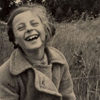USC Shoah Foundation presents stories of rescue at UNESCO’s International Holocaust Remembrance Day program

“Rescue: Preserving Humanity during the Holocaust,” a new exhibit curated by USC Shoah Foundation – The Institute for Visual History and Education, is on display in Paris at the headquarters of the United Nations Educational, Scientific and Cultural Organization (UNESCO). The exhibit is part of UNESCO’s International Holocaust Remembrance Day 2013 activities; commemorated annually on January 27, the anniversary of the liberation of Auschwitz-Birkenau, International Holocaust Remembrance Day pays tribute to the victims of the Holocaust.
This year, UNESCO is highlighting the theme “The Courage to Care: Rescue during the Holocaust” in a series of public educational events that include a commemorative ceremony, conference, and three exhibitions at the UNESCO House in Paris. “The history of the genocide perpetrated during the Second World War does not belong to the past only. It is a living history that concerns us all, regardless of our background, culture, or religion,” Irina Bokova, UNESCO Director General, said. “Other genocides have occurred after the Holocaust, on several continents. How can we draw better lessons from the past?”
“The testimonies in the exhibit underscore the complexity of rescue during the Holocaust while also acknowledging the rescuers and aid providers whose actions during the war allow the voices of the survivors to continue to resonate today and into the future.”
To connect the past to the present, the public is invited to view the Institute’s exhibit, which will be on display from January 28 to February 4. The exhibition showcases the video testimonies of nine Jewish survivors and four rescuers and aid providers who offer a multiplicity of voices and personal experiences of rescue during the Holocaust. Visitors are guided through the exhibition by a series of descriptive panels related to five themes of rescue that characterize a range of activities, decisions, and outcomes. The themes—Organized Rescue, Diplomats and Rescue, Rescuing Children, Religion and Rescue, and Acknowledging Rescue—come alive through the stories in the videos projected in the exhibition space, which are also available for viewing on the homepage of the Institute’s website. These testimonies were culled from the Institute’s Visual History Archive of more than 50,000 testimonies; the archive contains more than 1,100 testimonies of rescuers and aid providers interviewed in 29 countries and 23 languages.
The exhibit honors those who made decisions, large and small, to risk their lives, as well as those of family and friends, to save thousands of Jews during the Holocaust. Whether acting individually or as part of an organized network, they came from a wide variety of religious and cultural backgrounds and countries around the world. Their acts demonstrate the power of choice when confronted with injustice, and serve as examples of the importance of preserving human dignity and human rights. “Rescue is a crucial topic in understanding genocide survival and appreciating the difficult choices that people make in extreme circumstances,” said Amy Marczewski Carnes, Associate Director of International Programs for the Institute and curator of the exhibit. “The testimonies in the exhibit underscore the complexity of rescue during the Holocaust while also acknowledging the rescuers and aid providers whose actions during the war allow the voices of the survivors to continue to resonate today and into the future.”
Like this article? Get our e-newsletter.
Be the first to learn about new articles and personal stories like the one you've just read.